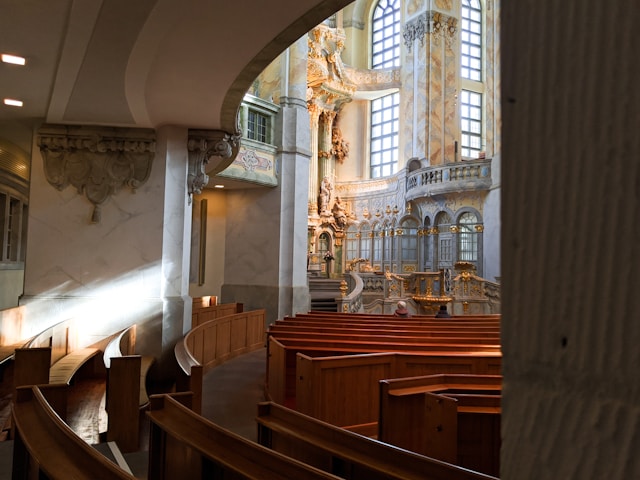Your cart is currently empty!
Basilica of the National Shrine: A Haven of Faith and Architecture

Introduction
Nestled in the heart of Washington, D.C., the Basilica of the National Shrine of the Immaculate Conception stands as a testament to the devotion and architectural brilliance of the 20th century. As the largest Catholic church in North America and one of the largest in the world, the Basilica draws millions of pilgrims and visitors annually, offering a sanctuary for spiritual reflection and an awe-inspiring glimpse into the grandeur of human achievement.
In this comprehensive guide, we delve into the rich history, architectural wonders, and spiritual significance of the Basilica of the National Shrine, providing an insider’s perspective into this hallowed space.
History
Conception and Construction
The idea for a national shrine dedicated to the Immaculate Conception was conceived in 1846, but it wasn’t until 1913 that Archbishop James Cardinal Gibbons formally established the project. Construction began in 1920 and continued for over 80 years, with the Upper Church finally completed and dedicated in 1959.
Architectural Style
The Basilica is a masterpiece of Byzantine-Romanesque architecture, known for its soaring arches, intricate mosaics, and opulent ornamentation. The exterior is adorned with a series of domes and towers, while the interior boasts vast marble halls, towering ceilings, and a stunning mosaic canopy over the High Altar.
Spiritual Significance
Dedication to the Immaculate Conception
As its name suggests, the Basilica is dedicated to the Immaculate Conception of the Virgin Mary, a fundamental doctrine of the Catholic Church that holds that Mary was conceived without original sin.
Pilgrimage and Devotion
The Basilica is a major pilgrimage site, attracting visitors from around the world who seek spiritual renewal and devotion. It houses numerous chapels dedicated to saints and national figures, providing a space for quiet reflection and prayer.
Architectural Features
Upper Church
The Upper Church is the largest and most impressive part of the Basilica, spanning over 500 feet in length and 250 feet in width. Its vast interior can accommodate up to 10,000 people.
Mosaics
The Basilica’s walls and ceilings are adorned with over 100 million pieces of mosaic tiles, depicting scenes from the Bible, the life of Christ, and the saints.
Crypts
Beneath the Upper Church are two levels of crypts, where over 10,000 individuals are buried, including prominent Catholics, clergy, and military personnel.
Visitor Information
Hours of Operation
The Basilica is open daily to visitors from 7:00 am to 7:00 pm.
Guided Tours
Guided tours are available and highly recommended to fully appreciate the Basilica’s history and architectural grandeur.
Admission
Admission to the Basilica is free of charge.
Conclusion
The Basilica of the National Shrine is a sacred and awe-inspiring place that embodies the faith, artistry, and architectural excellence of the modern era. Its rich history, stunning features, and spiritual significance make it a must-see destination for pilgrims, tourists, and anyone seeking a deeper connection to their faith or a breathtaking glimpse into the wonders of human achievement.